This Douglas Workhorse Threw Everything AND the Kitchen Sink at Our Enemies
On March 18th 1945 the Douglas XBT2D-1 Dauntless II took to the skies from Mines Field in Los Angeles for the first time. This was the prototype AD-1, then later the A-1, Skyraider. The result of a shift in Navy Bureau of Aeronautics (BuAer) thinking that occurred early in 1943, the XBT2D-1 designator reflected a combined bomber/torpedo (BT) aircraft that would replace the existing and planned dive bombing (SBD / SB2C) and torpedo bombing (TBF / TBM) aircraft. This would allow carrier air wing compositions to shift toward more fighter aircraft per carrier. The AD-1 and later the Skyraiders would be a refinement of this initial prototype.
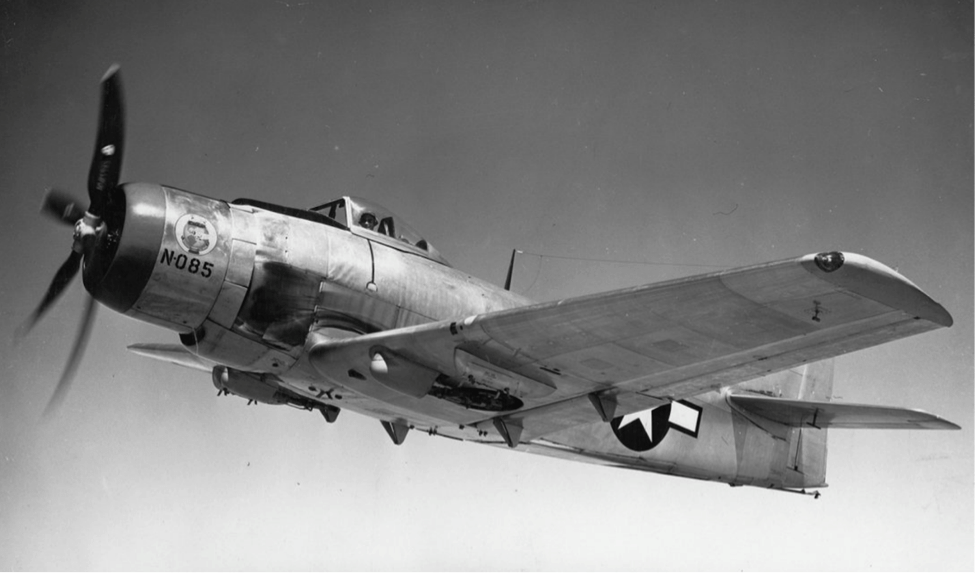
Conceived Overnight
Douglas had earlier landed a contract to build the BTD-1, but their renowned designer Ed Heinemann didn’t believe the BTD-1 would be anything more than a temporary solution to the Navy’s requirements. After some deliberation, Heinemann and Douglas requested that BuAer cancel the BTD-1 entirely and allocate the funds to a new design that would be ready in a month. BuAer gave him until the next morning.
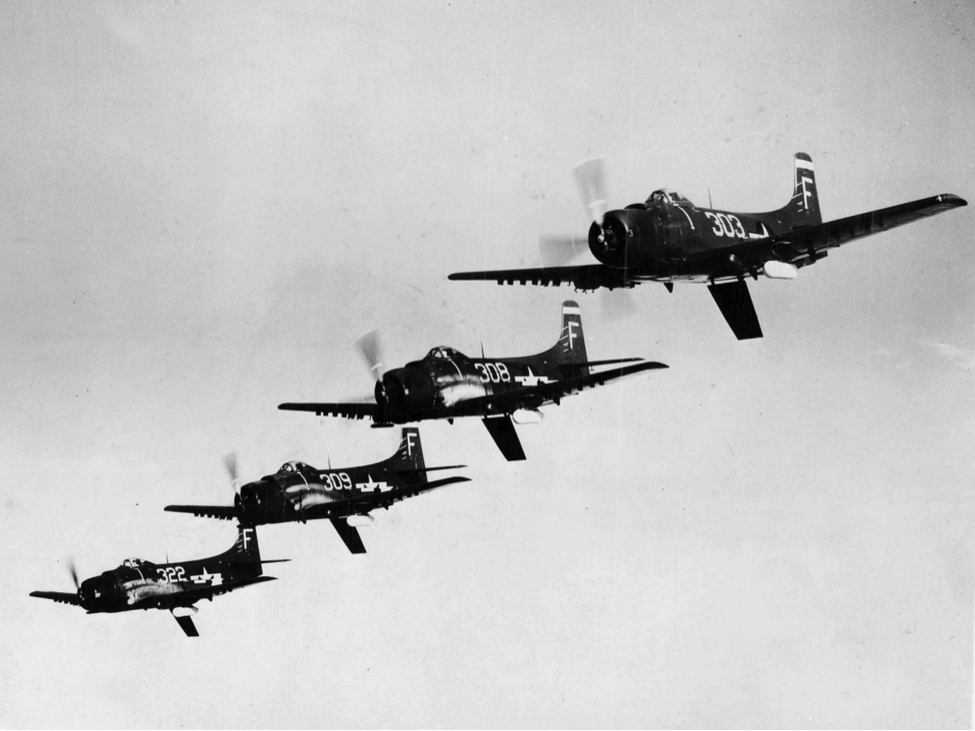
The Winning Design Concept
The design presented to BuAer at 0900 the next day was completely different from the BTD-1. Powered by the Wright R-3350 Duplex Cyclone engine, the drawings (actually begun a few weeks earlier) were of a low-wing taildragger with straight tapered wings under which ordnance could be carried on a total of 15 stations. Featuring a bubble canopy, large board-type dive brakes, and wing-mounted 20 millimeter cannons, the BTD-2 won BuAer over.

Another Douglas Stalwart
Given only nine months to complete the design and build 25 pre-production BT2D-1 Dauntless IIs, Douglas came through and when the prototype XBT2D-1 flew flawlessly nine months later. Other designs in competition with the Dauntless II did not compare favorably with the big slab-sided but sweet-handling machine from El Segundo- so much so that Douglas was awarded with a contract to build 548 of them.
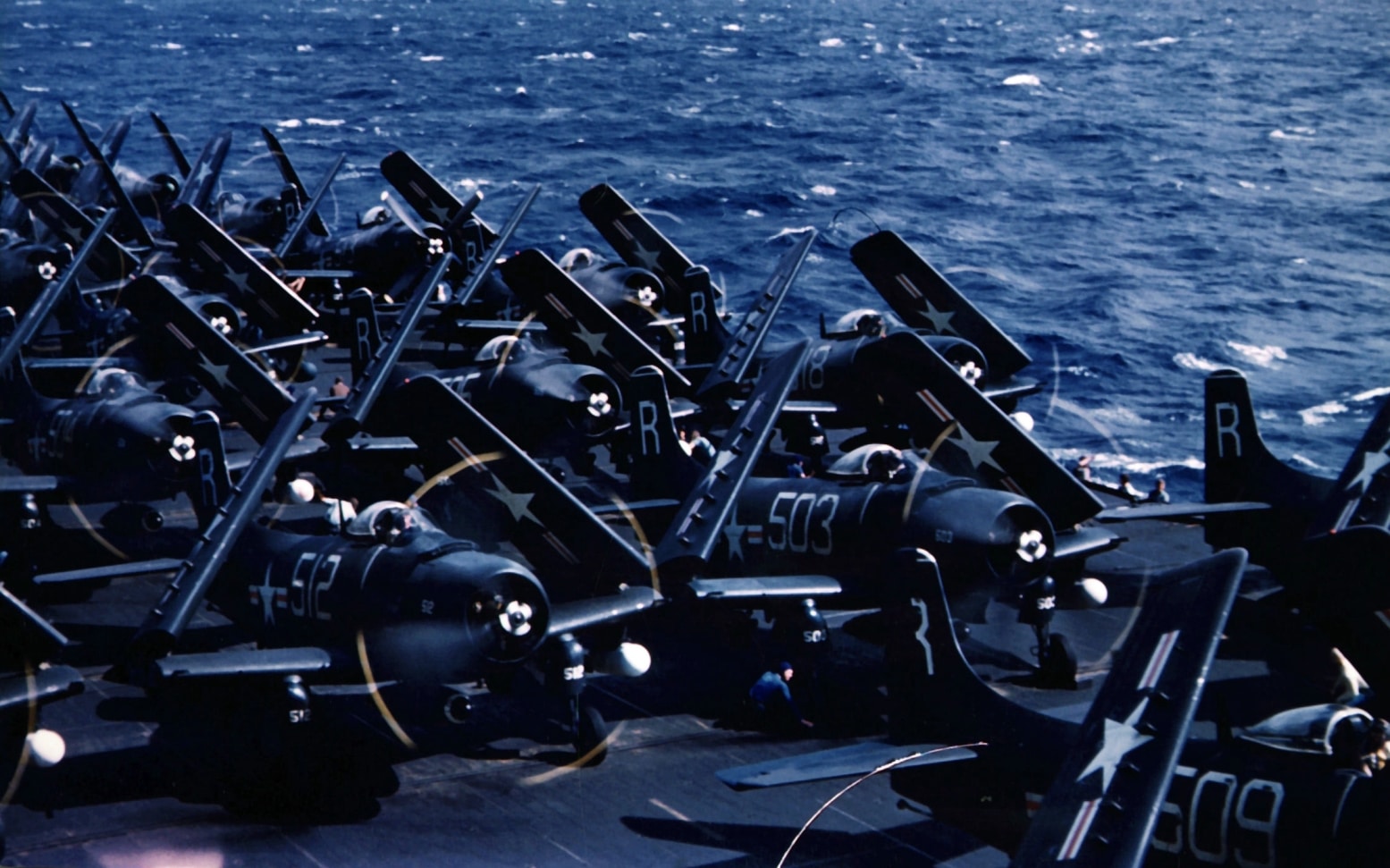
Too Good to Abandon After the War Ended
When World War II ended the BT2D-1 contract was cut back to 277 airframes. Ironically it was thought that the Dauntless II would quickly be rendered obsolete by the jet-powered aircraft now in the pipeline. Next for the Dauntless II was evaluation at the Naval Air Test Center (NATC). When BuAer changed designations from BT to A (for attack), the BT2D-1 Dauntless II became the AD-1 Skyraider.
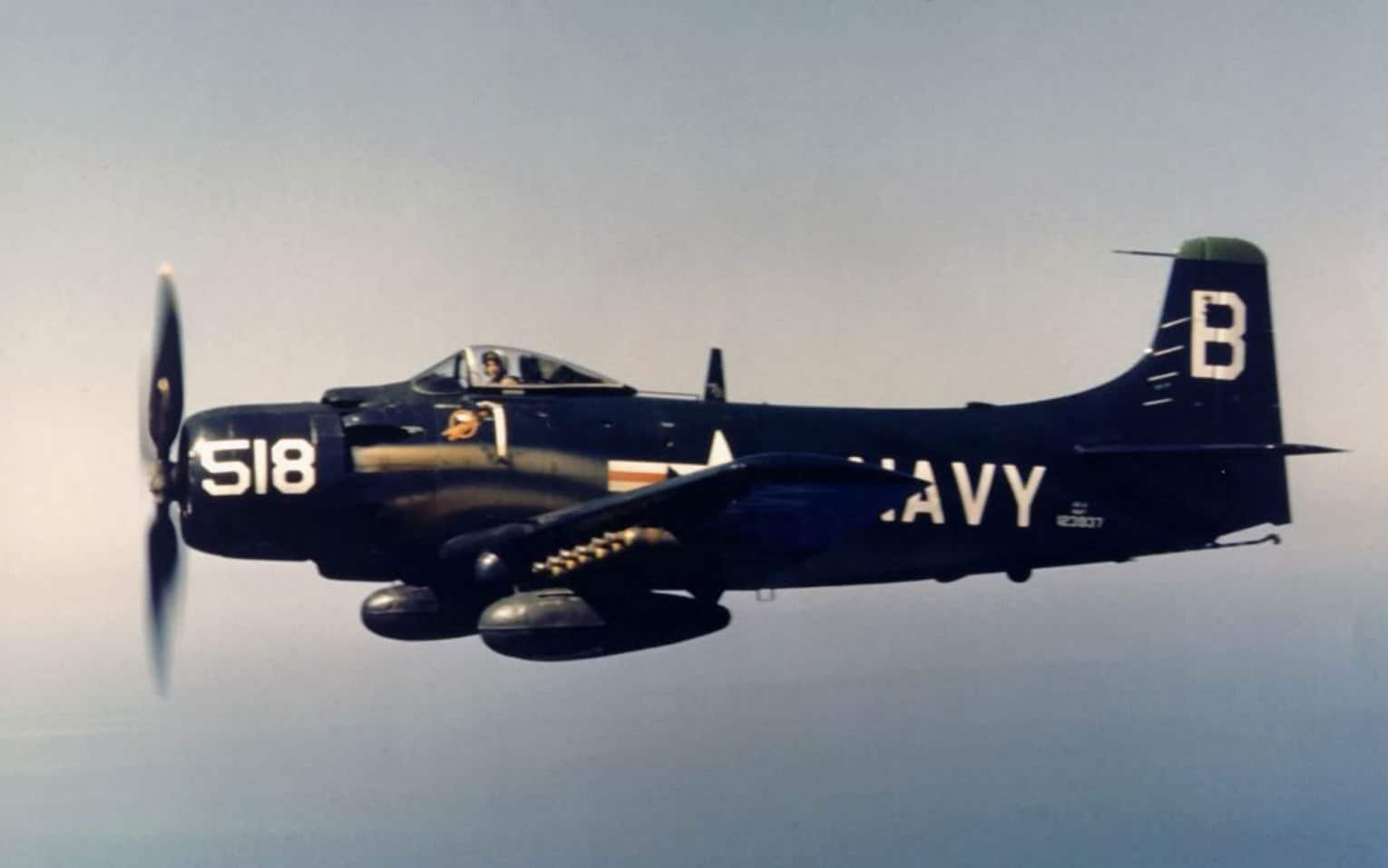
The First Specialized Skyraider
Carrier suitability trials were conducted during late 1946 by VA-19A out of Naval Air Station (NAS) Alameda on San Francisco Bay. By the end of 1946 BuAer declared the Skyraider operational. Quickly thereafter BuAer wanted AD-1s configured for specialized duties. When the final 35 airframes of the first AD-1 order were completed as AD-1Q electronic countermeasures aircraft, so began the development of one of the most versatile aircraft ever designed. Between production start in 1945 and completion of the last AD-7 on February 18th 1957, 3180 Skyraiders were built in seven basic versions and 28 variations of them.
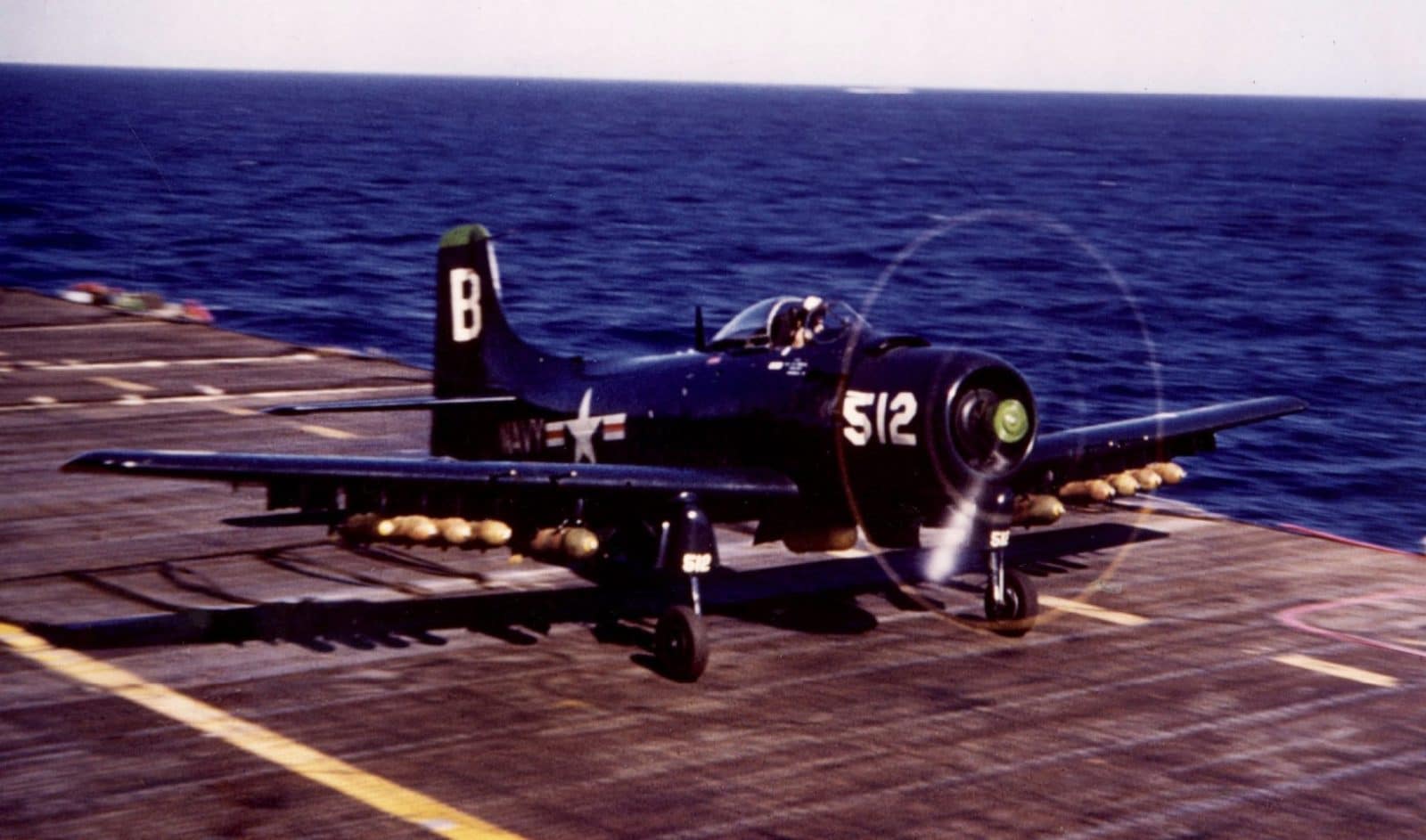
Praised for Its Toughness
The true test of any aircraft is how the people who fly and maintain it feel about it. They took to calling the Skyraider “Able Dog.” More than just the phonetic alphabet for A and D, it was a tribute to the type’s ease of operation, low maintenance requirements, and toughness, Skyraider people loved their steeds. The sight of one of the several examples still flying in civilian hands today warms the heart of anyone associated with it.
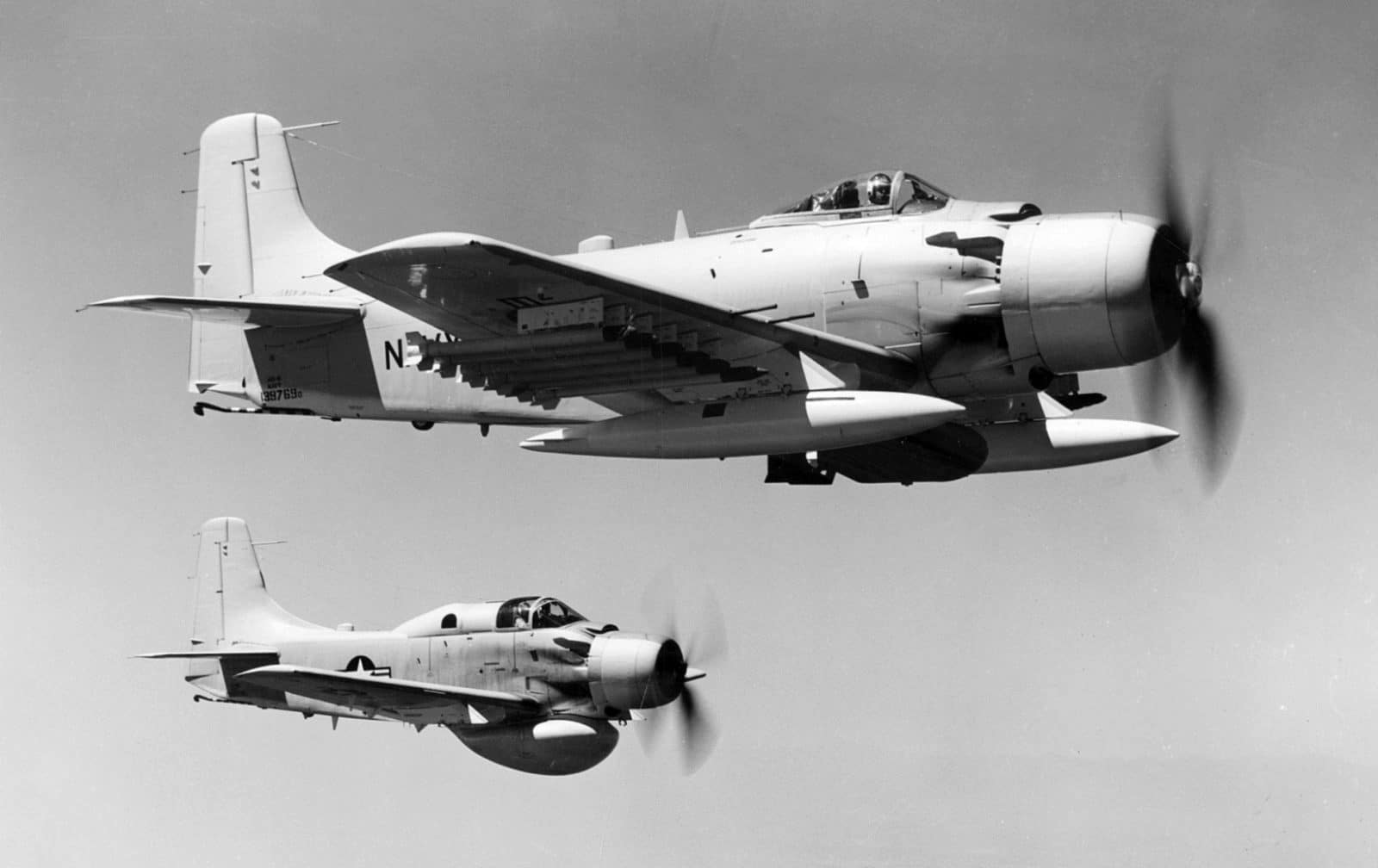
Adapted to Do Whatever Needed Doing
Development over the course of the Skyraider’s 12 years in production reflected improvements in engine technology and horsepower, electronics, and armaments. Douglas adapted the basic AD airframe to get many jobs done. Examples of these adaptations include airborne early warning (AEW), electronic countermeasures (ECM), night attack, radar countermeasures, nuclear attack, anti-submarine warfare, and target tug. As fleet requirements grew and varied, so did the list of Skyraider adaptations.


[…] Ubangis both both equipped with the Douglas A-4C Skyhawk, VA-15 Valions flying the Douglas A-1H Skyraider, VAH-11 Checkertails flying the Douglas A-3B Skywarrior, a detachment from VAW-12 Bats flying the […]
Thanks for providing information about an aviation related topic unknown to me. Just enough detail to remain interesting start to finish.